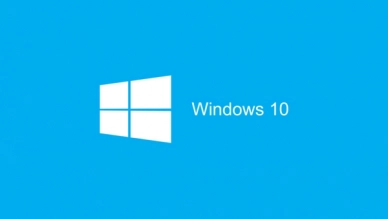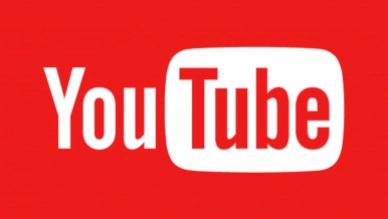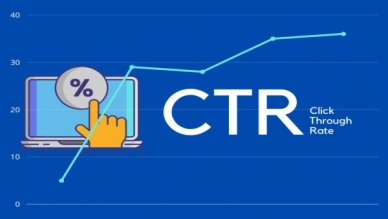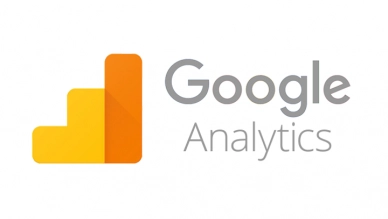Common SEO terms you need to know
There are many terms in SEO, and if you're just starting to learn about SEO, you'll encounter quite a few. Understanding the concepts and meanings of these terms will greatly assist you in researching and reading materials about SEO.
1. SEO
SEO stands for Search Engine Optimization, which simply means optimizing search engines to help websites achieve high rankings.
2. CTR
CTR stands for Click-Through Rate, which is the ratio of clicks to the number of times a website is displayed. For example, if 1000 people search and see your website on Google, but only 20 people click on it, then the CTR is 20/1000 = 0.02%.
3. CRO
CRO stands for Conversion Rate Optimization, meaning optimizing the conversion rate. Simply put, it's the ratio of users visiting your website who become customers. For example, if 100 users visit your website and 10 decide to purchase, the CRO is 10/100 = 10%
Some factors that can affect CRO include:
- The professionalism of a website
- The price of products compared to competitor websites.
- The credibility and brand of the website owner
- Customer care and consultation from staff.
- ....
4. PR
PR stands for Page Rank, a metric that assesses the credibility of a website and is calculated from 0 to 10. Google scores a website's PR based on the number and quality of backlinks pointing to that site. However, the PR metric has been removed by Google nowadays, and you should not focus too much on this metric while doing SEO.
5. Index
Your website being indexed means you can find it on Google. To check if your website has been indexed by Google, use the operator site:domain.
6. Robots.txt
Robots.txt is a file that blocks search engines from collecting information and indexing. For example, if there is a link on your website you do not want Google to collect and index, you add that link to the Robots.txt file.
7. DA and PA
- DA stands for Domain Authority, a metric that assesses the credibility of your domain.
- PA stands for Page Authority, a metric that assesses the credibility of each post on your website.
These two metrics are similar to Google's PR metric, and currently, they are used more frequently.
8. Backlink
A backlink is a link from another website pointing back to yours. Backlinks are a rather important factor in SEO.
9. Internal Link and External Link
Internal Link refers to internal links, simply connections between subpages within a website.
External Link refers to external links, or links from your website pointing to other websites.
10. Anchor Text
Anchor text is the words or phrases (typically the keywords related to the content of the post) that are linked to another post or a different website.
11. SEO Onpage
SEO Onpage is a set of techniques to optimize the website to become friendly with search engines.
12. SEO Offpage
SEO Offpage comprises external factors affecting the website, such as building backlinks or buying traffic,...
13. Sitemap
A sitemap is a diagram of the website that helps search engines understand the structure of the website.
14. Rich Snippets
Rich Snippets are additional information displayed next to search results, such as star ratings, number of reviews, images,... The purpose of this is to increase the Click-Through Rate (CTR).
15. Domain Age
Domain Age is the age of the domain and is calculated from the time of registration. Websites with older domains tend to have higher credibility.
16. RSS
RSS is a data feed of a website, and other websites can automatically retrieve news from your website through RSS.
17. Algorithm
An algorithm is used by search engines to collect data and organize website rankings to match users' search needs. Google's algorithm has many rules to determine the ranking of a webpage, such as titles, descriptions, backlinks,...
18. Bounce Rate
Bounce Rate is the percentage of users who visit your website and choose to leave after only viewing one page. If this rate is high, it will affect the website's ranking position.
19. LSI Keyword
LSI (Latent Semantic Indexing) Keywords are keywords semantically related to the main keyword used for SEO.
It's essential to distinguish between synonymous keywords and LSI keywords. For example, if the main keyword is "travel", synonymous keywords could be sightseeing, vacation,... and LSI keywords might be hotel booking, flight tickets, snack foods, landmarks, ...
20. Duplicate Content
Duplicate Content refers to identical content found on multiple websites. Search engines will only index and display the link that first published the content on the internet, and copied content links will not be indexed and may be penalized. This is extremely important in SEO and should be carefully avoided.
21. Featured Snippet
A Featured Snippet is a highlighted excerpt that answers a user's query on the search engine. This snippet is extracted from a section of an article, along with the title, image, and link pointing back to the post. Typically, these results receive relatively high click-through rates compared to other results due to their position and eye-catching format.
22. Google Analytics
Google Analytics is an application that allows you to track all informational activities on your website, such as number of visits, traffic sources, user behavior, page exit rates, etc. Additionally, this tool allows you to compare current and past data, thereby assessing the growth of a website.
23. Google Search Console
Google Search Console is a free tool provided by Google that allows you to verify website ownership and provides extremely valuable information such as the number of pages indexed, keyword positions, number of impressions, click-through rates, and also allows manual indexing requests for your website's pages.
24. Long-tail Keywords
Long-tail keywords are phrases consisting of 4 or more words used to describe something more precisely. You can research and apply this type of keyword to target more accurately, thereby supporting better customer conversion. For example, the main keyword: SEO service, a long-tail keyword could be: SEO service price list in Danang.
25. Organic Traffic
Organic Traffic refers to the traffic that comes to your website from search engines without paying.
26. PPC
PPC stands for Pay Per Click, simply understood as advertisers paying a fee for each user's click when they click on an ad.
27. Search Intent
Search intent is the initial intention and purpose of users when they use a search engine. Understanding the real reason and purpose behind users' search queries will help you create higher quality articles that better match search intent, helping your website rank higher.
28. SEM
SEM stands for Search Engine Marketing, understood as a type of Internet marketing where advertisers pay to increase their website's visibility on search results.
29. SERP
SERP stands for Search Engine Results Page, simply understood as the page displaying search results. Formats for displaying search results include Google ads results, organic search results, highlighted snippets, knowledge graphs, and video results.
30. Spider
Spider is the information collection program of the search engine. It scans websites and stores the information for indexing.
31. Time on Page
Time on page indicates the average duration spent on a website page, showing how users interact with your website. This metric can be reviewed in the Google Analytics application.
32. URL
URL stands for Uniform Resource Locator, which is the address of a website or a link to a specific article.
33. Voice Search
Voice Search allows users to search by speaking instead of typing. Users directly pose their questions aloud, and then voice recognition software sends the query and returns search results.
34. Website Speed
Web page speed indicates the load time for your website, with faster pages providing better user experiences.
35. Black Hat SEO
Black Hat SEO is a set of methods that exploit loopholes to boost a website's rank on search engines, usually unstable and not long-lasting.
36. White Hat SEO
White Hat SEO comprises legitimate methods based on search engines' guidelines and policies, often yielding slower but more stable and long-lasting results.
37. 200 OK
200 OK is a server response indicating that everything is A-OK with a website.
38. 301 Redirect
A 301 Redirect is a server response that redirects users who try to access a certain link but are directed to a new address.
39. 404 Not Found
404 Not Found is an error message informing users that the address does not exist due to deletion or link errors.
Submit feedback
Your email address will not be made public. Fields marked are required *
Search
Trend
-
What is Black Myth: Wukong? Detailed Guide on System Requirements and Gameplay
08-21-2024 . 1k view
-
The simplest and fastest way to log into the Chinese TikTok, Douyin.
01-10-2022 . 1k view
-
Blog sites that will accept AI generated content
07-26-2024 . 1k view
-
Call of Duty: Black Ops 6 - Intense, Mysterious, and Surprising Warfare
09-02-2024 . 1k view
-
The "End of Life" for Windows 10: A Massive E-Waste Threat and Sustainable Solutions
08-18-2024 . 941 view











0 feedback